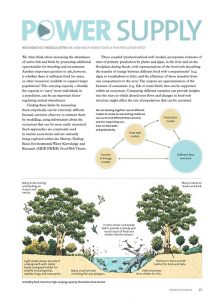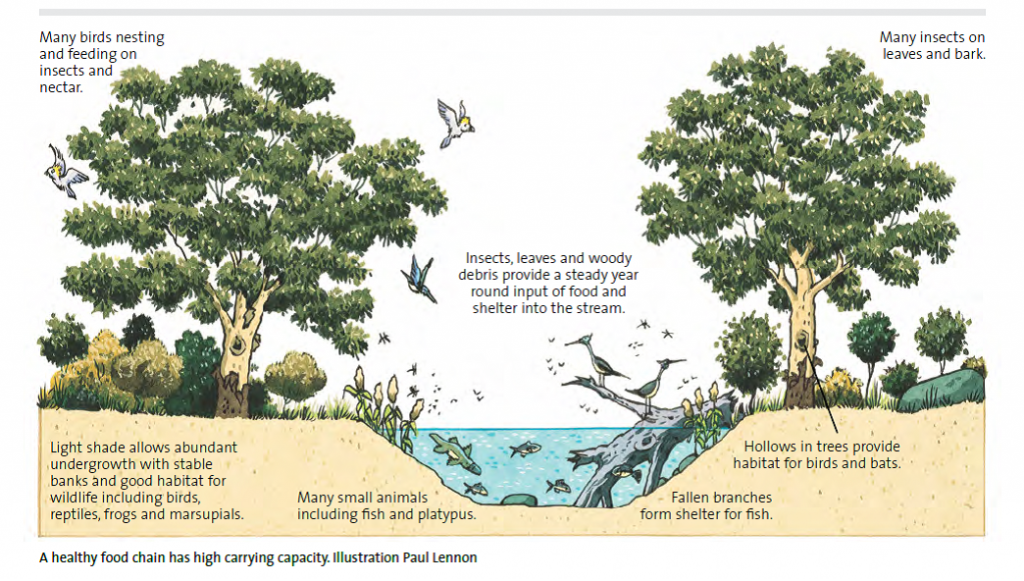Authors: Nick Bond and Rebecca Lester
We often think about increasing the abundance of native fish and birds by promoting additional opportunities for breeding and recruitment. Another important question to ask, however, is whether there is sufficient food (or space or other resources) available to support larger populations? This carrying capacity – literally the capacity to ‘carry’ more individuals in a population, can be an important factor regulating animal abundances.
Finding these limits by measuring them empirically can be extremely difficult. Instead, scientists often try to estimate them by modelling, using information about the ecosystem that can be more easily measured. Such approaches are commonly used in marine ecosystems and are currently being explored within the EWKR Food Web Theme.
These coupled ‘production/food web’ models incorporate estimates of rates of primary production by plants and algae in the river and on the floodplain during floods, with representations of the food web describing the transfer of energy between different food web ‘compartments’ (e.g. algae to zooplankton to fish), and the efficiency of those transfers from one compartment to the next. The outputs are approximations of the biomass of consumers (e.g. fish or water birds) that can be supported within an ecosystem. Comparing different scenarios can provide insights into the ways in which altered river flows and changes in food web structure might affect the size of populations that can be sustained.

These illustrations show the difference between the complexity of food chains in ‘healthy’ and ‘unhealthy’ riparian ecosystems. Our work is examining these differences to determine the impact of ecosystem health on carrying capacity.
Reviewing and refining:
Rather than starting from scratch, the MDB EWKR team are adopting an existing model developed from an earlier research program, and modifying it to suit the specific needs of the current project. An important first step, is to have the model and its outputs peer reviewed. We are currently preparing a manuscript describing the model and its application that will provide confidence in its validity and suitability for the current project. The model is also being refined to make it more user friendly, and easier to run different flow management scenarios.
Once completed, the model will provide a valuable tool helping the research team to understand the effects of carrying capacity on population dynamics, and to identify areas where energetic or food web influences may limit the ability of populations to grow in response to increased breeding or recruitment opportunities. This will help scientists and managers identify situations where additional river flows or other complementary activities may be required to increase the capacity of the ecosystem to support larger population sizes of native fish. These background activities will be completed toward the end of 2017.
As well as applying the model to adult fish populations, the foodweb team will also be working with the MDB EWKR Fish Theme to explore similar questions regarding the role of flow in influencing food availability and larval fish survival. This work is being done at finer spatial and temporal scales and will continue into 2018.

For further information:
- contact Nick Bond: n.bond@latrobe.edu.au
- contact Rebecca Lester: rebecca.lester@deakin.edu.au
Related links:
- Link to more Funky Food Web Stories
- please visit the MDFRC website, Facebook Page or YouTube Channel
- MDB EWKR Food Web Theme Leader: p.mcinerney@latrobe.edu.au


